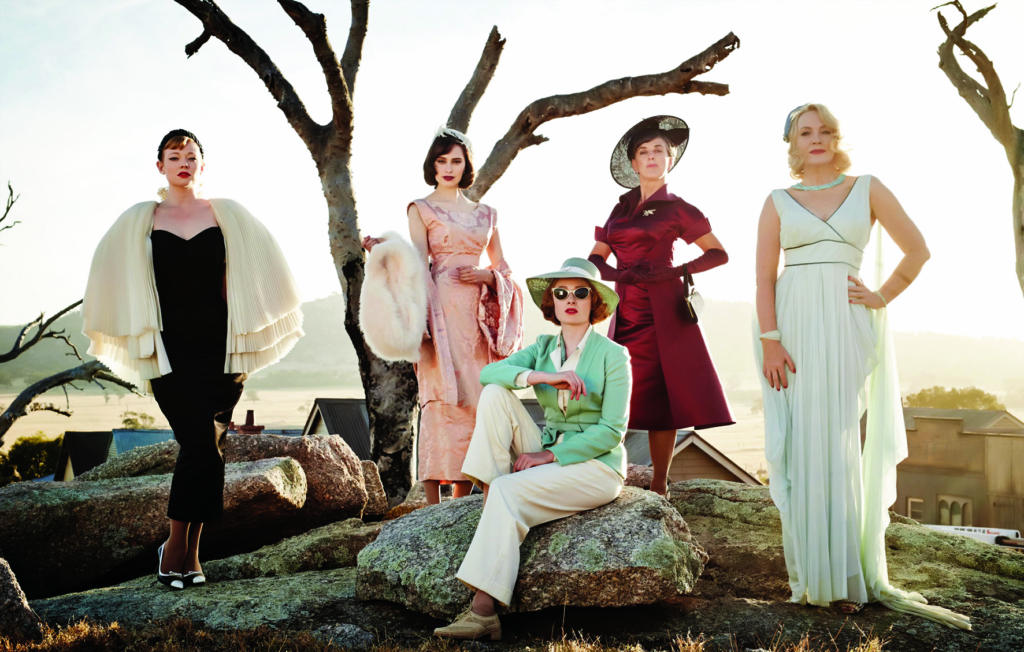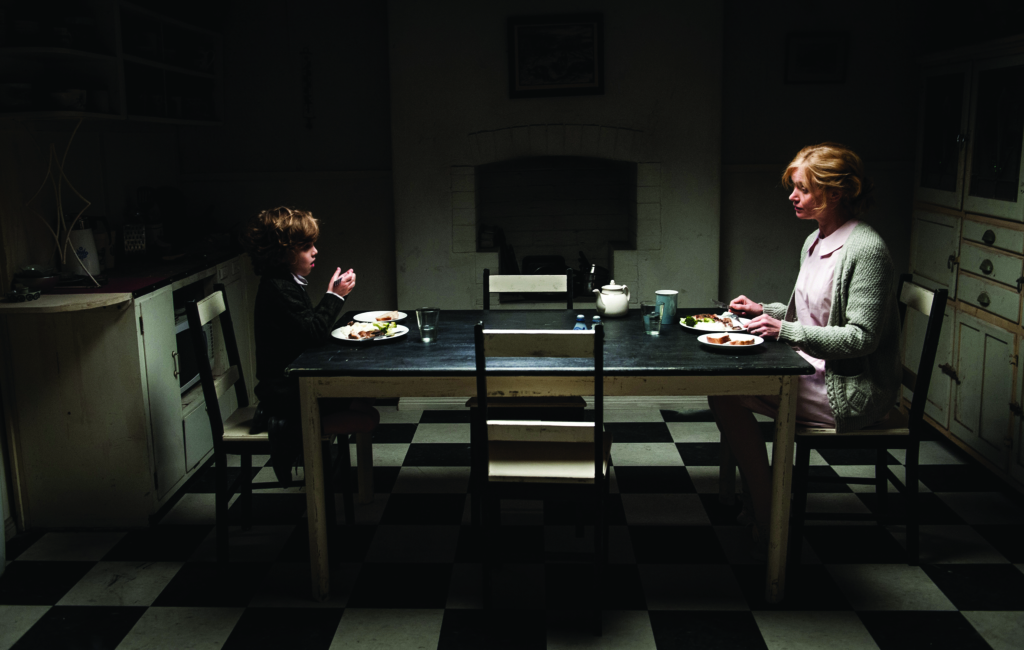I have eight years experience working in the Melbourne film and television industry, and recently becoming a mother has led to a personal interest in the experiences of other women in the field. There has been limited research to date that investigates gender inequity in the Australian screen landscape. Questions around how women ‘make it work’ and continue to thrive in an industry that, in my experience, is inflexible are important. I wanted to find out more about women who have successful screen-industry careers and to determine perceived challenges for women in the field more broadly.
Published research on female participation in the film and television industries in Canada, Ireland, the UK and the US has identified a range of factors affecting career progression and opportunities: systematic obstacles to women’s participation, representation and seniority include an unconscious bias towards men; gendered roles; inflexible ‘flexible’ work conditions (excessive work hours, unpredictable schedules and geographic mobility); discriminatory hiring practices; gendered financing and distribution of projects; lack of female role models; lack of career-progression opportunities; and caring duties predominantly falling on women.[1]Amanda Coles, What’s Wrong with This Picture? Directors and Gender Inequality in the Canadian Screen-based Production Industry, Canadian Unions for Equality on Screen, 2016; Anne O’Brien, ‘“Men Own Television”: Why Women Leave Media Work’, Media, Culture & Society, vol. 36, no. 8, 2014, pp. 1207–18; Anne O’Brien, ‘Producing Television and Reproducing Gender’, Television & New Media, vol. 16, no. 3, 2015, pp. 259–74; Stacy L Smith, Katherine Pieper & Marc Choueiti, Exploring the Barriers and Opportunities for Independent Women Filmmakers, Sundance Institute & Women in Film Los Angeles, 2013; Leung Wing-Fai, Rosalind Gill & Keith Randle, ‘Getting in, Getting on, Getting out? Women as Career Scramblers in the UK Film and Television Industries’, The Sociological Review, vol. 63, issue S1, May 2015, pp. 50–65; Natalie Wreyford, ‘The Real Cost of Childcare: Motherhood and Flexible Creative Labour in the UK Film Industry – Review Essay’, Studies in the Maternal, vol. 5, no. 2, 2013, pp. 1–22.
Methodology
My investigation centred on thirteen women working in the Australian film and television industry. I aimed to gain a balance between those who could be identified as ‘midcareer’ and ‘established’, across a range of industry genres (documentary, reality and drama), and between those with and without dependent children. Participant roles in the industry covered writers, directors and producers, the last of which comprising the largest group. Recruitment was principally through work contacts; the majority of participants were Melbourne-based, with the rest working in Sydney.
I used semi-structured interviews to explore each person’s career trajectory (including highlights, longevity, networking and work–life balance) as well as personal opinions about industry policy and practices. These interviews, which were recorded and transcribed, revealed three key themes: industry work practices, social issues and suggestions on industry programs/initiatives.

Seeing the big picture
In order to understand how gender inequity can stem from working patterns, knowledge of how the industry operates is important. Industry-specific factors contribute to the systemic disadvantaging of women, and the interviewees raised issues such as gendered roles and not gaining proper credit for work undertaken.
Women in the UK screen industry have been reported as disproportionately occupying lower-status and gendered jobs, and facing discrimination in hiring according to sex and class.[2]Irena Grugulis & Dimitrinka Stoyanova, ‘Social Capital and Networks in Film and TV: Jobs for the Boys?’, Organization Studies, vol. 33, no. 10, 2012, pp. 1311–31. This was also the reported experience of most women interviewed in my research. For example, when considering entering the industry and which positions they would apply for, they innately knew traditionally male roles – such as those in camera and sound departments – were not open to them, and so never applied for those roles. One producer explained:
I learnt early on in my career […] there was a definite school of thinking that men shoot more and women just organise things and kind of fall into those roles. And you sometimes just think it’s easier to do them because you’re good at doing them rather than push the other way. I feel like those things are still quite inherent.
In 2015, Screen Australia released research data regarding gender representation in key creative roles in the Australian film industry, noting that women make up 32 per cent of producers, 16 per cent of directors and 23 per cent of writers in fiction filmmaking, and 46 per cent of producers, 34 per cent of directors and 38 per cent of writers in documentary.[3]Screen Australia, Gender Matters: Women in the Australian Screen Industry, 2015, p. 5, <https://www.screenaustralia.gov.au/getmedia/f20beab8-81cc-4499-92e9-02afba18c438/GenderMatters-Women-in-the-Australian-Screen-Industry.pdf>, accessed 26 July 2018. This was reflected in comments from interviewees:
I started to get some commercial work on the strength of my short films through [AGENT],[4]Company names have been redacted in the interest of anonymity; for clarity, they have been replaced with general nouns in capital letters and enclosed in square brackets. but not any commercials that in any way showcased my talents […] It was specifically commercials that were low-budget, where they were looking for a female director because there was going to be a baby on set or a kid on set or it was a female product.
To be able to secure ‘cool’, high-end commercials (better pay, product and creativity), she had to already have ‘cool’ commercials under her belt. The same men kept getting these jobs because they had the opportunities to begin with.
The interviewee believed that this lack of opportunity to direct a range of commercials meant that she was completely dissatisfied with her showreel: to be able to secure ‘cool’, high-end commercials (better pay, product and creativity), she had to already have ‘cool’ commercials under her belt. The same men kept getting these jobs because they had the opportunities to begin with.
In order to progress in the industry, filmmakers need to attain a certain level of experience and ‘credits’. Without credits, it is difficult to prove they are ready to take the next step. This is also paramount when they want to apply for funding through federal and state agencies, which require specific credits for eligibility purposes. Interviewees reported experiences of having worked at a higher level but not having been credited for it, which led to delayed career progression. A director explained:
I’ve realised in hindsight [that] a lot of the writing I’ve done in my career, I’ve done uncredited. And because I didn’t think I was going to be a writer, a lot of my writing has been on other people’s projects, which then, in turn, makes it harder for me to apply for funding for my own projects.
A producer explained:
I’ve been line-producing all these things for people where, really, I was producing – I don’t get the credit for it and, if I don’t get the credit, I can’t get my own finance. And so I was insisting at that point that I get that kind of acknowledgement.
With unconscious bias and unregulated working environments and hiring practices commonplace in the film and television industry, it is difficult to regard it as an equal playing field.
Social issues and their impact on women’s careers
Key social themes that arose from the interviews were: perceived lack of self-confidence, perception of disadvantage, and the cost and impact on career advancement of child-rearing duties.
In my research, most interviewees identified confidence as a barrier to career development and success. A number of participants highlighted the need to double-check their work before sending it out – a case of underestimating their skills and knowledge. They also described the need to feel like they had 100 per cent eligibility and capability in a role before putting themselves forward for a job or promotion. Interviewees felt, at times, like they were impostors or frauds despite years of experience and demonstrated capability. Some even reported having other (male) industry workers question their role and status of leadership:
The biggest hurdle I find is that people don’t listen to me. And I think it must be a communication thing, and that comes with confidence – which, I think, has a lot to do with other women in the industry.
One director/producer who was not impeded by confidence issues gave advice for women to overcome the confidence gap:
When you see an opportunity, [it’s about] not letting fear stop you […] I don’t think real, true ‘bravery’; I mean ‘gutsy’ – ‘Oh, fuck it, I’ll just give it a go’ […] You actually have to just go, ‘It’s all a bit of a game and I’ll give it a shot,’ and every time you do that, you get stronger.
Although many of the participants pinpointed confidence as a personal issue, the culture and society they were raised in as well as the media’s reiteration of social norms have played a prominent part in shaping their identity and self-concept. To shift these ingrained and outdated ideas of female identity and women’s role in society, gender representation in the media must change.

Women’s perception of disadvantage
Token females in senior roles do not equate to equitable hiring practices across the industry. Participants in the research were asked: ‘Do you think women are disadvantaged in the Australian film and television industry?’ Responses differed, particularly between the ‘midcareer’ and ‘established’ groups. The established participants tended to point to women’s disadvantage in the industry as a whole, whereas those at the midcareer level pointed to disadvantage in their own careers to date. One midcareer producer provided this opinion:
Recently, working with camera guys from [PRODUCTION COMPANY] […] I got spoken over a lot and – not to use clichés – I got mansplained [to] a lot, and I found that really difficult. But I made a point of pointing it out to other managers, made other people more conscious of it […] things like, ‘You book these things, I’m not booking these things for you’; ‘My rank is higher than you, you do it’; ‘If you’re too busy to do it, I’m way busier than you’ […] But, at the same time, I still felt the need to double-check with my boss that I wasn’t being out of line.
A midcareer writer commented:
I don’t know that I think that, across the board, women are disadvantaged. I feel like women with children are disadvantaged.
I think, from a script point of view, I’ve never experienced any kind of suggestion that, because I’m a woman, I’m going to be less qualified for a script role.
An established writer/producer/director explained:
The very fact that we have to have programs like Gender Matters [shows that] of course we’re disadvantaged. I heard an executive tell a friend of mine the other day – [she’s] working on something with a female lead – ‘Does it have to be so woman-y?’ Yes, what does that even mean? I’ve had executives watch the rushes or watch a cut of something and talk about the boobs of an actor; I encounter it on a chronic basis […] I know there are younger women who say they haven’t encountered it, but they have; they just don’t even know […] I’m privy to a lot of decision-making and what happens at a decision-maker’s level, and it’s endemic.
Interviewees saw motherhood as a hindrance throughout their career. Some commented that they have seen other women treated unfairly, and this ‘glimpse’ into what their world would be like if they were a parent had set them up to perceive the industry as being discouraging of motherhood.
The impact of motherhood
Participants were asked to describe their work–life balance and comment on any barriers to progression in their career. Their responses concur with existing research that investigates whether motherhood has impeded career opportunities.[5]Wreyford, op. cit. My research considered this question from the perspective of both workers and employers who were either mothers or not mothers. One interviewee’s husband stayed at home when they had children so she could keep writing and working in the industry. She would have liked, ideally, to continue working from home and not in-house, but the effects of not being an in-house writer have implications for further work:
When you’re working [in-house], you’re in everyone’s faces and they see you and you just get offers […] When you’re in the game, you’re in it, and when you’re at home – either by choice working freelance or not available to go in – people very quickly go, ‘Well, she’s just had a baby so, you know, maybe it’s not the time.’
This remark reiterates the importance of networking in the industry – the necessity of ‘being seen’ even while on the job to generate future employment and opportunities.
A researcher/producer realised that the industry wasn’t geared for working mothers after the birth of her daughter, so, for a few years, she had to work outside the industry, where she was offered flexible working hours, the opportunity to work from home and time off during school holidays. In an attempt to integrate back into the television industry, she pitched herself for job-share producer roles with a friend and colleague (also a mother) but reported being ‘laughed out of the room’ at a major magazine television program. The participant noted that, while some places are doing job-sharing now, it is still not widely adopted.

My research revealed that interviewees saw motherhood as a hindrance throughout their career. Some commented that they have seen other women treated unfairly, and this ‘glimpse’ into what their world would be like if they were a parent had set them up to perceive the industry as being discouraging of motherhood. One producer commented:
I had that experience at [PRODUCTION COMPANY], where a young mum was editing and [PRODUCTION COMPANY] were so chaotic and disorganised that they would just say to their editors at 4pm almost every day, ‘Oh, can you stay until 5, 6, 7, 8, 9pm because we’ve suddenly got this work in and we haven’t scheduled it?’ They could get away with it because they were paying by the hour, but that wasn’t suitable for a mum that had to pick up her kid from childcare. And so, when the mum said, ‘I’ve got to go – the childcare closes at 6pm’ or whatever, they’re like, ‘Oh, we can’t hire a mum anymore.’
Clearly, greater efforts need to be made to create a supportive workplace for mothers. The interviews show that women are not leaving the film and television industry because they want to become full-time mothers. Rather, it is because the industry simply does not allow for any flexibility in supporting mothers, a large subset of its workers. A review into industry work structures to see what changes could be proposed to make workplaces fair and equitable for all is essential.
Potential pathways to successful careers
Paid industry internships, attachments or traineeships were integral to six interviewees’ careers. These placements, all of which were funded by Screen Australia and Film Victoria, included: storyliner traineeships that led to the interviewee’s first ongoing paid work; transitioning from one subindustry (documentary) to another (animation); transitioning from one role (editor) to another (producer) to elevate the interviewee’s career; progressing in the same role (producer); and directing attachments in feature film. Although these placements benefited the participants, there were concerns about availability, eligibility and financial viability (including childcare fees).
Another success factor was the importance of high-calibre mentors and supporters. The majority of participants had strong female mentorship that continued throughout their career; only one participant had all-male support. Midcareer participants who had not, thus far, enjoyed mentorship opportunities conveyed that they see the benefit in having them and would like to work towards having one. For those with an established career, a number are heavily involved in mentorship schemes and are offering that support to other women working in the industry.

The participants interviewed in this research came up with several suggestions for improving the industry:
• Lower event prices. While major conferences and screen events are integral for meeting key decision-makers, pitching projects and networking with like-minded people, the cost to attend them can range from hundreds to thousands of dollars. These costs can be prohibitive to many independent practitioners, who then miss out on valuable and time-sensitive information and connections.
• Better accessibility for mothers. As conferences, mentorship programs and initiatives, workshops, panels, Q&As and networking events are critical to career progression, they must be made more accessible to women who have children. It was suggested that the ‘traditional’ times and days when these events occur be modified (for example, moved to weekends or during the day), and that onsite childcare services be made available.
• Job-sharing opportunities. The adoption of job-sharing opportunities for mothers was recommended, along with a policy structure to provide ongoing support for it. In these cases, the roles must still be reflective of the woman’s skills and experience level, rather than having her be relegated to lower duties or pay brackets.
• More women in leadership and executive roles. These include women as members of boards responsible for industry policy decisions. Some suggested that this might be more feasible if a gender-quota system were implemented, as has been the case in other industries in Australia.
The above essay is derived from a minor thesis entitled ‘An Investigation of the Contemporary Experiences of Women in the Australian Film and Television Industry: Perceived Challenges to Career Success’, undertaken as part of a Master of Arts and Cultural Management at The University of Melbourne, completed in 2017.
Endnotes
| 1 | Amanda Coles, What’s Wrong with This Picture? Directors and Gender Inequality in the Canadian Screen-based Production Industry, Canadian Unions for Equality on Screen, 2016; Anne O’Brien, ‘“Men Own Television”: Why Women Leave Media Work’, Media, Culture & Society, vol. 36, no. 8, 2014, pp. 1207–18; Anne O’Brien, ‘Producing Television and Reproducing Gender’, Television & New Media, vol. 16, no. 3, 2015, pp. 259–74; Stacy L Smith, Katherine Pieper & Marc Choueiti, Exploring the Barriers and Opportunities for Independent Women Filmmakers, Sundance Institute & Women in Film Los Angeles, 2013; Leung Wing-Fai, Rosalind Gill & Keith Randle, ‘Getting in, Getting on, Getting out? Women as Career Scramblers in the UK Film and Television Industries’, The Sociological Review, vol. 63, issue S1, May 2015, pp. 50–65; Natalie Wreyford, ‘The Real Cost of Childcare: Motherhood and Flexible Creative Labour in the UK Film Industry – Review Essay’, Studies in the Maternal, vol. 5, no. 2, 2013, pp. 1–22. |
|---|---|
| 2 | Irena Grugulis & Dimitrinka Stoyanova, ‘Social Capital and Networks in Film and TV: Jobs for the Boys?’, Organization Studies, vol. 33, no. 10, 2012, pp. 1311–31. |
| 3 | Screen Australia, Gender Matters: Women in the Australian Screen Industry, 2015, p. 5, <https://www.screenaustralia.gov.au/getmedia/f20beab8-81cc-4499-92e9-02afba18c438/GenderMatters-Women-in-the-Australian-Screen-Industry.pdf>, accessed 26 July 2018. |
| 4 | Company names have been redacted in the interest of anonymity; for clarity, they have been replaced with general nouns in capital letters and enclosed in square brackets. |
| 5 | Wreyford, op. cit. |





